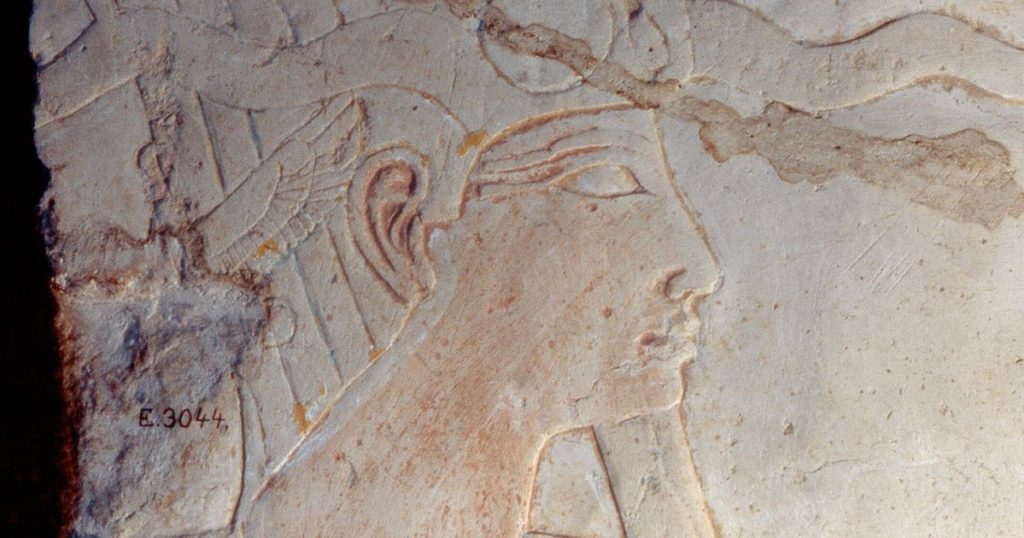A Groundbreaking Discovery: The Tomb of King Thutmose II Unveiled
Introduction: Unveiling a Centuries-Old Secret
In a remarkable archaeological breakthrough, Egyptian officials have announced the discovery of King Thutmose II’s tomb, a find that reverberates through the corridors of history. This excavation marks the first royal tomb uncovered since the legendary discovery of King Tutankhamun’s burial site in 1922. The revelation, spearheaded by Egypt’s Ministry of Tourism and Antiquities, brings to light a piece of history that had been hidden for millennia, offering insights into ancient Egypt’s enigmatic past. This tomb, though discovered in a state of disrepair, promises to rewrite the chapters of Egyptology and captivate historians and enthusiasts alike.
Historical Context: The Reign of the 18th Dynasty
The 18th Dynasty, flourishing from 1550 to 1292 B.C.E., was a golden age of ancient Egypt, marked by architectural marvels and formidable rulers. During this era, pharaohs such as Hatshepsut and Thutmose III left indelible marks on Egyptian history. King Thutmose II, though often overshadowed by his illustrious predecessors and successors, played a crucial role in maintaining Egypt’s prosperity. His reign was brief, yet significant, as he laid the groundwork for the military campaigns of his successor, Thutmose III. Queen Hatshepsut, one of the few female pharaohs, emerged as a powerful figure, leaving behind a legacy of architectural achievements and economic prosperity.
The Discovery: A Journey Through Time
The journey to uncover King Thutmose II’s tomb began with its initial identification in 2022. Archaeologists, engaged in a meticulous exploration near the Valley of the Kings, stumbled upon an entrance they believed might lead to the tomb of a royal consort. However, two years of dedicated excavation revealed a far more significant find. A joint Egyptian-British mission meticulously excavated the site, unearthing a corridor that finally led to the chamber of the long-lost tomb. This discovery not only solves a century-old mystery but also opens doors to understanding the funerary practices of the 18th Dynasty.
Condition and Findings: Unraveling the Mysteries Within
Despite the excitement of the discovery, the tomb was found in a state of disrepair, bearing the scars of ancient floods. The inundation that occurred shortly after Thutmose II’s death had left its interior damaged, with plaster fragments scattered and in need of restoration. The archaeological team painstakingly recovered these fragments, uncovering hints of the tomb’s original splendor. Among the artifacts were alabaster jars inscribed with the king’s name and remnants of funerary furniture, which are the first of their kind to be associated with Thutmose II. These findings provide a tangible connection to the past, offering a glimpse into the burial rituals of ancient Egypt’s elite.
Significance: Illuminating the Past
The discovery of King Thutmose II’s tomb is monumental, not just for its historical significance but also for the insights it offers into ancient Egyptian society. Experts like Dr. Salima Ikram highlight the importance of the tomb’s location outside the Valley of the Kings and its connection to Queen Hatshepsut, who played a pivotal role in its construction. The artifacts, adorned with religious texts and motifs, are not mere relics but windows into the beliefs and practices of that era. This find is a testament to the enduring legacy of Egypt’s ancient rulers and a reminder of the mysteries still buried beneath the desert sands.
Future Implications: Paving the Way for Future Discoveries
As the archaeological team continues its work, the site promises to yield more secrets. The primary goal now is to restore the tomb to its former glory and uncover the whereabouts of its original contents, which were relocated in ancient times. This ongoing effort not only preserves history but also ensures that future generations can learn from and appreciate the richness of Egypt’s past. The discovery of King Thutmose II’s tomb is more than just an archaeological milestone; it is a gateway to understanding the intricacies of ancient Egyptian civilization, inviting us to explore, learn, and marvel at the achievements of our ancestors.















